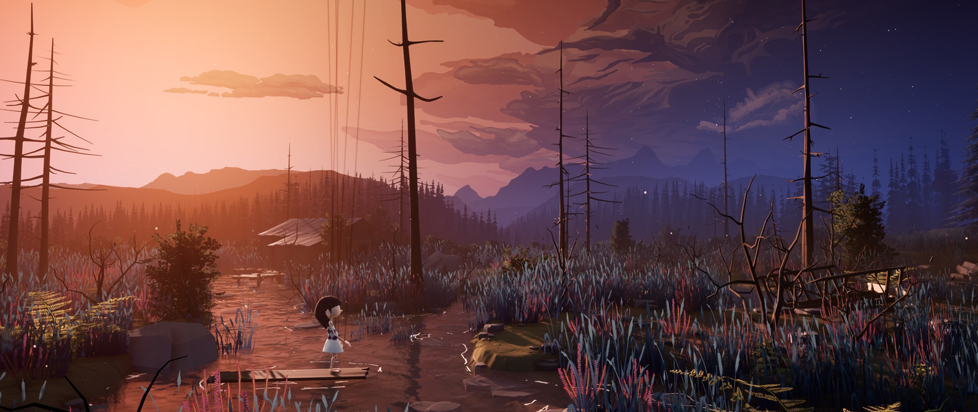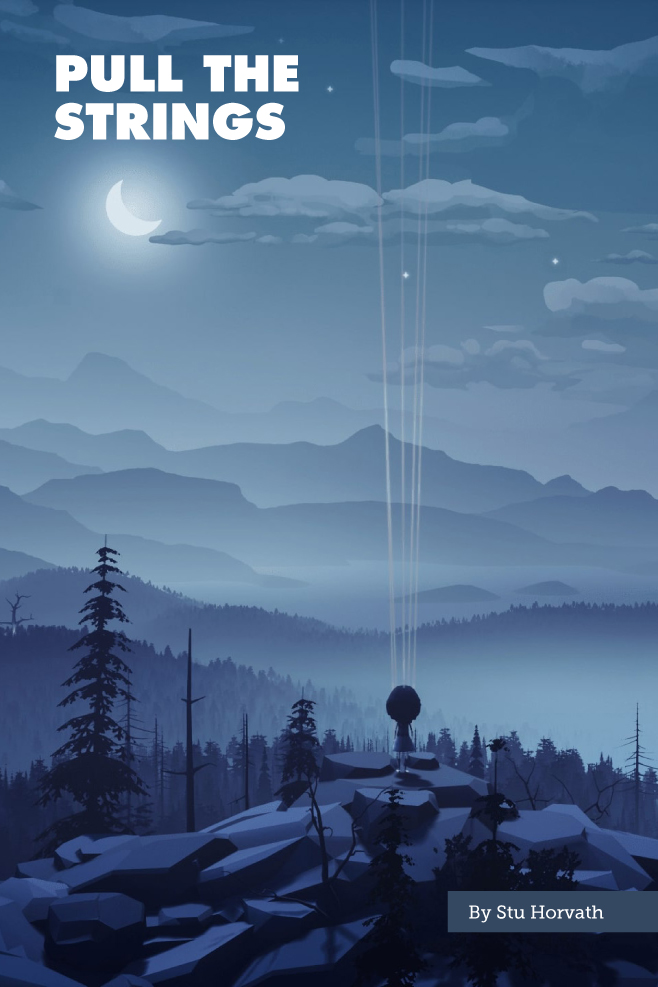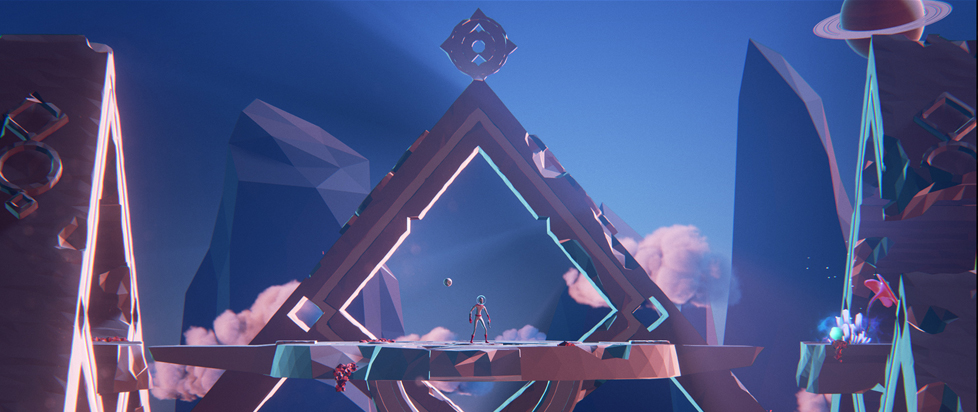
A Juggler’s Tale: Pull the Strings
This feature is a reprint from Unwinnable Monthly #125. If you like what you see, grab the magazine for less than ten dollars, or subscribe and get all future magazines for half price.
———
This series of articles is made possible through the generous sponsorship of Epic’s Unreal Engine. While Epic puts us in touch with our subjects, they have no input or approval in the final story.

Have you ever felt like a character in a movie?
One chilly March night, about fifteen years ago, I was sitting on my fronts steps, chatting with a friend when a man came running down the street, entirely naked except for his socks. He pounded past us, muttering to himself, and we could only sit there, frozen in confusion. A few moments later, his pale shape disappeared around the corner and everything was as it was: quiet, dark, cool.
It was unsettling, like the ground shifted beneath my feet. There was no immediate explanation for the encounter. No one followed the man in pursuit. No police sirens chirped. There were no sounds of a distant party elsewhere in the neighborhood. It felt as though we had been somehow drafted momentarily for a reaction shot in a comedy movie we were otherwise entirely unaware of and, our purpose fulfilled, deposited just as quickly back into our mundane reality.
And while this is a fairly dramatic example, I’ve experienced a similar sensation – that my grip on things has been superseded by another – many times, in more innocuous situations. I sometimes feel a compulsion to grab the hot rack of the toaster oven, or stand in the rain a moment longer, or to mutter a dramatically appropriate quip though no one could possibly hear it. I’m willing to bet that you’ve felt someone tug on your invisible strings, too.
* * *
A Juggler’s Tale is a puzzle platformer where players take the role of Abby, an imprisoned circus performer who escapes into a fairy tale world of danger and adventure. Raging rivers, bandits, wild animals and more stand in her way, but she isn’t alone: her journey is accompanied by the lyrical rhymes of the narrator who, as it happens, also pulls the strings. For Abby and all her adventures and her adversaries are actually all part of a puppet show, one that grows more complicated as the player interferes with the narrator’s story.
Each chapter begins in the “real” world, at the puppet theater that is part of a medieval circus. When the story begins, the surroundings change into the stylized backdrops of the theater, focusing the player on the unfolding drama. Only the puppet strings remain to remind players that this is not real.

“The player has to solve small, story-based riddles centered around the mystical puppet theatre setting,” says Dominik Schön, of Kaleidoscube, a German studio formed by students from Filmakademie Baden-Württemberg in Ludwigsburg. “The puppet strings are not only a visual representation of the strong connection between narrator and puppet, but they are also our main gameplay mechanic.”
Using string puppets for a game’s characters offer a surprising number of benefits. For starters, they aren’t nearly as creepy as many other puppets and have been underutilized in games – I can’t think of a similar game. Aside of that, they have a unique way of moving that comes with natural, immediately understandable limitations to gameplay. Most of all, it introduces the dynamic tension between the puppet, the puppet master and the player.
“We wanted to build a strong connection between the player and the narrator,” says Dominik. “Of course, with all the characters being connected to the omnipresent narrator through the strings they can be the reason for conflicts between the puppets and the narrator. They are a movement restriction but also an opportunity for the narration to actually interfere with the player’s action by lifting the string puppet around.”

This gets meta very fast. The narrator controls Abby as well as every other character in the play, so acts in a way as both protagonist and antagonist. Meanwhile, the player is competing for control of Abby and the developers, in their way, are pulling the strings of everyone.
“Multiple layers of control and constructed story!” says Dominik. “Also, there is a traveling circus inside a puppet theater play inside a videogame – it’s always so hard to summarize this game in one short sentence.”
* * *
Puppet strings also introduce design challenges. String puppets can’t go under things, for instance, and the strings always run the risk of getting entangled. Due to the nature of the narrative, it took the team until the fourth chapter to realize these restrictions.
“These game mechanics sounded pretty interesting, but we had to change the way our puppet strings work so that they actually could do these things,” says Dominik. “Until then, they were pretty much only a visual element.”
After some programming, the strings can now be ripped or attached to multiple points, which suddenly opened up new possibilities for puzzles in the already completed chapters. Just like that, the team was pulled back to the beginning.
* * *
A Juggler’s Tale began as a student game at Filmakademie Baden-Württemberg where, instead of regular classes, courses are centered around developing student-run projects. It was envisioned as a game with five theatrical chapters populated with dozens of location and puzzles – obviously something too ambitious for the four month project phase. Instead of a fully realized game, they produced a vertical slice of one chapter that included all the elements they hoped to see in the final game.

That slice got them a small amount of funding from the Digital Content Fund, which in turn allowed them to found a small studio. At the end of a year, A Juggler’s Tale was in a state that could be submitted to festivals, where it won Best Newcomer Prototype as well as five other awards at Games Connection Europe 2019.
“This took us by surprise and made us believe in the game even more,” says Dominik. “we are now finishing the production during our final year of university as a co-production between our company and the university and with the additional help of a publisher. Looking back at the past few years, we are just really happy how everything turned out and that we now are not only confident working together but also have the opportunity to actually bring this game to the market.”
The way the team, which consists mainly of three students, does that work is unorthodox, though. Each member has their specialties, but the roles are constantly changing. When I asked Dominik his title, he was at a loss for a bit until he settled on Managine Director, “although this still sounds very strange.” On one hand, this leads to a lot of creative variety. “On the other hand,” says Dominik, “it is sometimes very difficult to focus on one important task, because there are so many things depending on various other things you need to do.”
Other folks have joined the team short term to provide programming support, music and sound, but the game has gotten this far without personnel dedicated to concept art or animation. They got by without the former by looking at a lot of art for inspiration. The latter took a lot of improvisation and on the job learning, using the university’s motion capture studio, Adobe’s mocap database Mixamo, on-board tools in the Unreal engine and lot of trial and error. “Instead of using a single animation,” says Dominik, “we oftentimes stitched multiple animations together to create the exact animation we need. This felt very clumsy at first but over the course of the project we kind of became experts in finding and misusing parts of animations for our needs. Of course, this does not always work (and you can’t mocap everything), so for specific animations we still had to do a lot of animations by hand.”

The game’s development started with the team locking themselves in a room for two months to hash out the story, just talking, no tech, building a framework of shared vision. This has followed through to production. One team member will work on scene layout, for instance, until they don’t know what to do anymore. Then they’ll push it to someone else, who will do more, then hand it back. And so on, until the thing is done and everyone is happy with it. It is hard to see if it is the developers or the game that is holding the ends of the string.
“We sort of stumbled into everything. At the beginning, we were just a bunch of students wanting to work on a game concept. From that we stumbled into events and the reception was amazing. So the many things that we are juggling around just always came naturally and one after another. Right now we are trying to push all of the media and organizing stuff away again, so that we can concentrate on actually finishing the game.”
* * *
Puppet theaters have an outsized presence in German culture compared to most other places.
“There are even children’s television shows that are recorded puppet theatre plays, the so-called Augsburger Puppenkiste is probably a part of everyone’s childhood here,” says Dominik. “My grandpa, he was a violin maker, he always built his own string puppets and so I started to build my own when I was around 10 years old.
“We wanted to link modern digital gaming culture with traditional, established theatre and poetry culture. Germany, our home country, can look back on centuries of fairy tales, poetry and drama. We grew up between these tales, legends and worlds – and combining these narratives with our love for story-driven games was our motivation.
* * *
For more on A Juggler’s Tale, check out the official site, as well as the Twitter and Instagram feeds.




